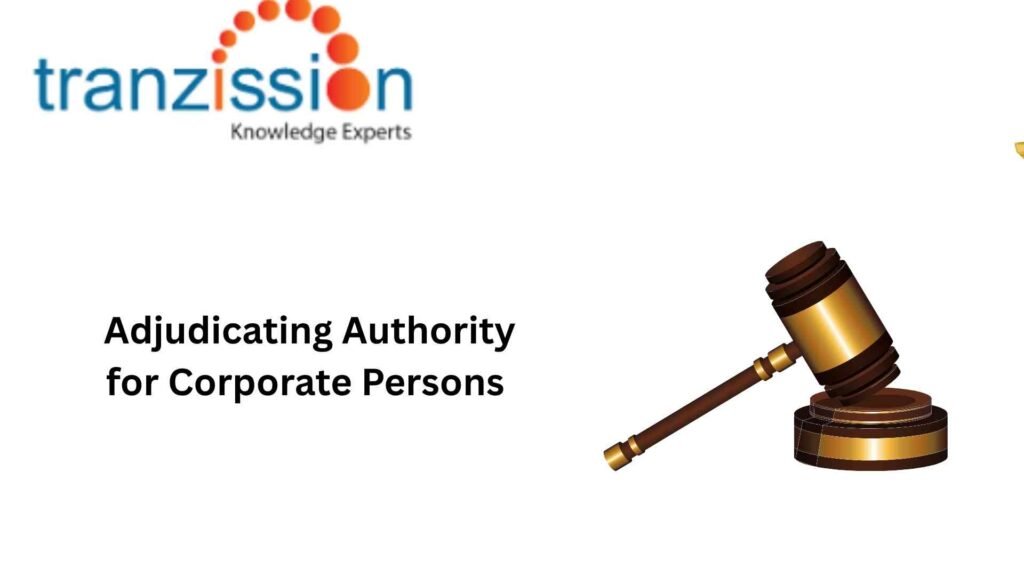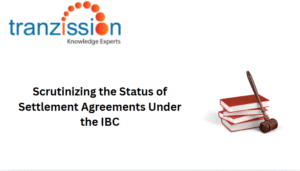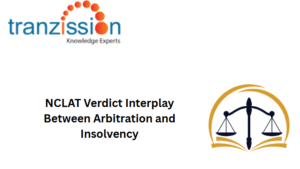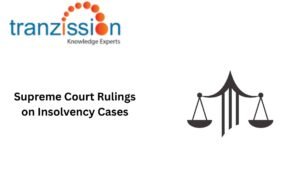
Adjudicating Authority for Corporate Persons

Table of Contents
What is an Adjudicating Authority Under IBC?
The Adjudicating Authority under the IBC is responsible for handling insolvency and liquidation proceedings for corporate persons, including companies and limited liability partnerships (LLPs). It ensures that insolvency cases are conducted as per the provisions of the IBC while protecting the interests of all stakeholders.
Designation of NCLT as the Adjudicating Authority
The National Company Law Tribunal (NCLT) is a quasi-judicial body responsible for resolving disputes related to company law, mergers, amalgamations, and company winding up, as well as overseeing insolvency resolution under the IBC. The NCLT is, thus, empowered to handle insolvency petitions filed by financial creditors, operational creditors, and corporate debtors. The National Company Law Appellate Tribunal (NCLAT) hears appeals against the NCLT orders.
What are its Key Functions?
The key functions of the NCLT as the Adjudicating Authority are:
- Overseeing the initiation and conduct of the corporate insolvency resolution process (CIRP) under the IBC.
- Appointing an insolvency resolution professional (IRP) and resolution professional (RP) to manage the debtor’s assets and operations during the CIRP.
- Approving the resolution plans proposed by the RP, ensuring the interests of creditors and other stakeholders are protected.
In cases where a resolution professional is not feasible, the NCLT initiates and oversees the liquidation process.
Jurisdiction & Powers of the Adjudicating Authority Under Section 60 of IBC
Jurisdiction of NCLT Over Corporate Insolvency:
The NCLT jurisdiction extends to matters “arising out of” or “in relation to” the CIRP or liquidation processes. The jurisdiction of the NCLT is covered under section 60 of the IBC. Section 60(1) states that NCLT shall have jurisdiction over corporate persons, including corporate debtors and personal guarantors, and Section 60(2) mandates that insolvency proceedings against corporate guarantors must be initiated before the same NCLT where the corporate debtor’s case is pending. Section 60(5)(c) grants NCLT residual jurisdiction, meaning it can adjudicate disputes arising solely from or related to the insolvency of the corporate debtor.
Role of NCLAT in Handling Appeals Against NCLT Orders:
According to the IBC provisions, the NCLAT reviews NCLT decisions to ensure fair and lawful adjudication of insolvency cases and serves as an appellate body before cases reach the Supreme Court (SC).
Check this out : Limited Insolvency Practice Exam
Supreme Court Rulings on the Jurisdiction of NCLT:
The Supreme Court has clarified that under the IBC, the NCLT’s jurisdiction is limited to disputes arising solely from or relating to the insolvency of a corporate debtor, and ti cannot usurp the jurisdiction of other courts or tribunals for matters outside this scope. Hence, the court has stated that civil courts and consumer forums cannot interfere in insolvency proceedings once admitted by NCLT.
Challenges Faced by NCLT as the Adjudicating Authority
The NCLT faces several challenges, including case backlogs, inconsistent decision-making, and overlapping jurisdiction:
Case Backlog & Delays in Insolvency Resolution:
The NCLT handles a large volume of cases, particularly complex insolvency matters, leading to significant delays. This backlog impacts the timely resolution of insolvency cases and the execution of resolution plans.
Conflicts Between IBC & Other Laws:
There are instances where the NCLT’s jurisdiction is questioned, and there is overlapping jurisdiction with the Securities Exchange Board of India (SEBI), land laws, and arbitration laws, potentially leading to delays and disputes.
Inconsistent Rulings & Lack of Judicial Precedents:
There have been concerns regarding the consistency of decisions across different NCLT benches. Further, the lack of clear provisions on how to handle claims of forgery and fabrication can impact the fairness and effectiveness of the process.
Case Studies – Key NCLT & NCLAT Rulings on Corporate Insolvency
In a high-profile insolvency case, NCLT’s intervention facilitated a resolution plan that saved jobs and ensured financial stability, as seen in the Essar Steel Case or the Jet Airways case. The NCLAT’s landmark decision in SBI v. Deepak Singhania clarified that formal invocation of a guarantee is a mandatory precondition for initiating insolvency proceedings against personal guarantors, reinforcing due process and preventing premature actions. Further, the court upheld that personal guarantors of corporate debtors could be included in insolvency proceedings, setting a legal precedent.
Best Practices for Insolvency Professionals & Creditors Navigating NCLT
To ensure that CIRP applications are admitted within the specified time frame, all required documents must be submitted with the insolvency petition to avoid delays.
To strengthen coordination between creditors and RPs, the Insolvency and Bankruptcy Board of India (IBBI) needs to encourage active communication between financial creditors, operational creditors, and RPs to ensure smoother insolvency resolution.
The IBBI could also leverage alternative dispute resolution, such as mediation and arbitration, which can help resolve disputes outside NCLT, reducing case backlogs.
Future of NCLT as the Adjudicating Authority in Insolvency Cases
The IBBI and the NCLT can adopt many practices that could improve the NCLT’s role in the insolvency or liquidation process, like:
Expanding the number of NCLT benches across India can improve efficiency.
Implementing e-filing of insolvency petitions and AI-based case management can enhance transparency.
The IBBI can adopt international insolvency standards to strengthen investor confidence and ease of doing business.
Conclusion
As the Adjudicating Authority, the NCLT plays a crucial role in overseeing insolvency proceedings, ensuring a fair, timely, and structured resolution of corporate financial distress, and protecting the interests of both creditors and debtors. By acting as the gatekeeper of insolvency processes, the NCLT fosters economic stability and investor confidence, solidifying itself as a pillar of India’s insolvency framework. To resolve the issue of court backlogs and pending cases, it is necessary to strengthen NCLT’s infrastructure and adopt advanced technology.





